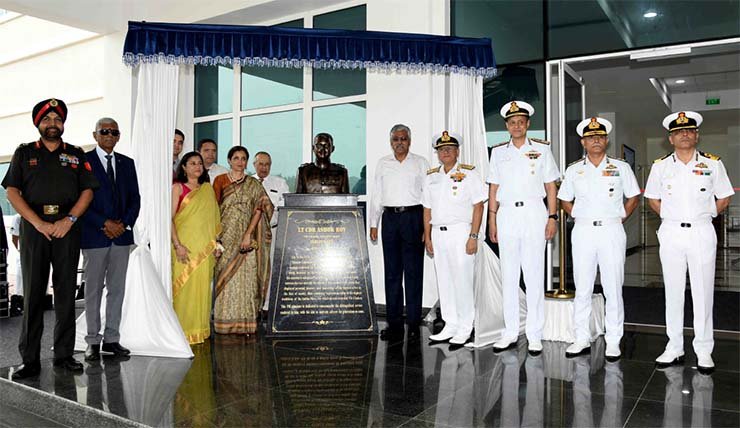
New Delhi: Defence Secretary, Giridhar Aramane, in the presence of Vice Admiral Biswajit Dasgupta, Flag Officer Commanding in Chief, Eastern Naval Command and Vice Admiral Sanjay Jasjit Singh, Vice Chief of Naval Staff, inaugurated the state-of-the-art P8I simulator named as ‘Ashok Roy Training Simulator Complex’ (ARTSC) on April 25 at INS Rajali, Arakkonam.
The ARTSC will allow reduction of on aircraft training, thereby ensuring higher availability of aircraft for operational missions. This facility will aid the aircrew in practising all operational missions and complex military scenarios and it will provide the men and women in the Indian Navy, the requisite training required to operate one of the most advanced aircraft – the P8I. The training simulator complex is named ‘Ashok Roy Training Simulator Complex’ to commemorate the distinguished service and the supreme sacrifice made by Late Lt Cdr Ashok Roy, during the gallant action in 1971 Indo Pak war.
The state-of-the-art Boeing P8I aircraft inducted in the Indian Navy in 2013 have flown over 40,000 hours. Designed for Long Range Maritime Reconnaissance (LRMR), Anti-Submarine Warfare (ASW), Anti Surface Warfare (ASuW) and Intelligence, Surveillance and Reconnaissance (ISR) missions, the aircraft plays a crucial role as eyes of the Indian Navy, in the vast expanse of IOR, whilst undertaking critical maritime operations. These aircraft thus, provide the nation requisite Maritime Domain Awareness, in our Area of Interest.
To ensure that men and women operating these advanced aircraft are adequately trained to undertake various operational missions, Indian Navy signed a turnkey project with Boeing in 2018 to build a simulator complex with on-site AMC of 10 years. The project, only the fourth of its kind in the world along with US, UK and Australia, is the first in Asia.
The complex houses a state-of-the-art simulator for training requirements of P8I aircrew and technical team aimed towards safe operation and maintenance of the aircraft. The facility will significantly contribute towards improving training standards and reduction of training requirement on actual aircraft, thereby ensuring higher availability of aircraft for operational missions. The aircrew can practice emergencies such as Engine Failure/ Fire, Rapid Decompression, Reject Take Off since these can be easily simulated for honing flying skills, but cannot be practiced in actual flying missions.
The simulator also provides a first-hand experience to the technical team to practice routine and special maintenance procedures with 3D software solutions, including armament loading/ unloading, as the facility is equipped with a to-scale model of aircraft wing and mock ups of missile and torpedo. The introduction of such a simulator is a transformative and progressive step towards quality training, which will significantly aid in enhancing the crew expertise towards ‘on-task’ mission effectiveness.














